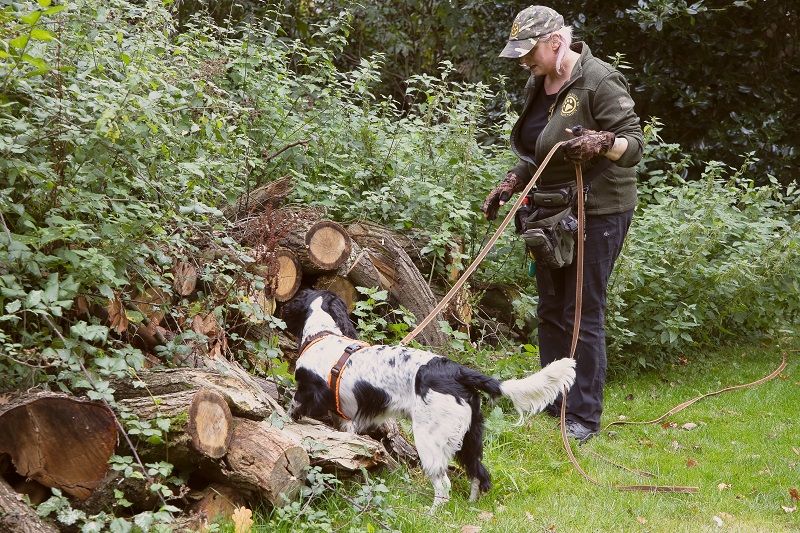Detection dog Henry successfully sniffs out hedgehogs
Hedgehogs are one of the UK’s most loved wild animals. But their numbers have dropped alarmingly fast in recent years. Like many of our other native mammals, hedgehogs are nocturnal and relatively shy. Finding hedgehogs – to count them or to protect them – has proven really tricky. We’ve many methods that we currently use – spot lights, footprint tracking tunnels, camera traps – but all have their limitations.
Canine hedgehog detectives
Detection – or sniffer – dogs have been hard at work helping humans for years. They’re well-known for their skills in sniffing out explosives, drugs, firearms, cash, tobacco, live bodies and cadavers. But less well-known is how skilful they are at sniffing out other things. Dogs are not only able to pick up the scent of animals but also their scats (faeces). Their sense of smell is at least 100,000 times more sensitive than ours. Whilst we have about 6 million scent glands in our noses, dogs have a staggering 300 million.
Dr Lucy Bearman-Brown, a senior lecturer at Hartpury University, Gloucestershire, has been working on hedgehogs for years. Her university campus at Hartpury has a good population of hedgehogs, so she decided to test how well a detection dog would do at finding these elusive mammals. In order to truly test the skill of detection dogs, Lucy decided to compare this ability to spotlighting and infrared thermal cameras.
Knowing the potential of using detection dogs, Lucy sought the help of Louise Wilson, the woman behind the novel Conservation K9 Consultancy. Louise has 16 years’ experience in honing the skills needed in both herself and her dogs. After seven years’ training dogs to sniff out drugs, firearms and cash, Louise moved into wildlife detection to help conservation efforts. Her work has included many mammal species, invasive plants and globally traded wildlife parts such as ivory.
Henry on the hunt
Over the past two years Lucy, Louise and Louise’s rescue springer spaniel Henry have been working together. Starting an hour after sunset, Lucy tested Henry’s ability to find active hedgehogs with surveyors using either a spotlight or a thermal camera. Hartpury, a college and university based around a 360 hectare commercial farm, has plenty of pasture and amenity grassland; both habitats favoured by hedgehogs.

Henry and the thermal camera detected significantly more hedgehogs than were found by a surveyors using a spotlight. And both found hedgehogs at a greater distance from the surveyors, proving how useful dogs and thermal cameras are at covering large areas of ground. Henry was also able to find hedgehogs in tall vegetation and completely hidden from view, unlike the other methods. Not only that, Henry didn’t miss a single animal that was also detected by thermal camera. This is really exciting and encouraging: detection dogs could be used to identify populations in areas where it’s unknown if they exist; or used to collect and safely move hedgehogs from development sites where they are at risk.
Currently Henry is the only dog in the UK trained to detect hedgehogs. He’s busy this winter seeing if he’s just as good at finding hibernating hedgehogs in their nests as he is at finding active hedgehogs. And this time he has no competition – neither a spotlight or a thermal camera can find a hedgehog snug in its nest as they reduce their body heat to that of the ambient temperature, and are cocooned in insulating leaves rendering even the latest technology redundant.
Whilst using a detection dog isn’t the cheapest option and requires skills developed over many months, it’s really encouraging to see how successful Henry has proven to be so far. It looks as though Henry and his future colleagues have a really important role to play in the future conservation of hedgehogs.
This project is only possible thanks to our generous donors. Can you help by donating today?
